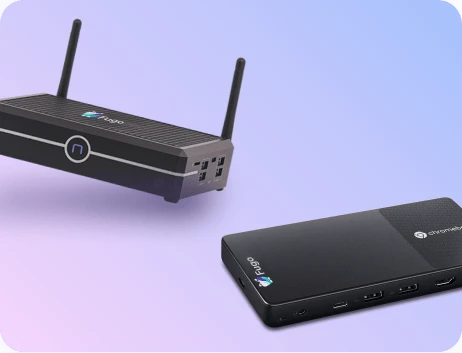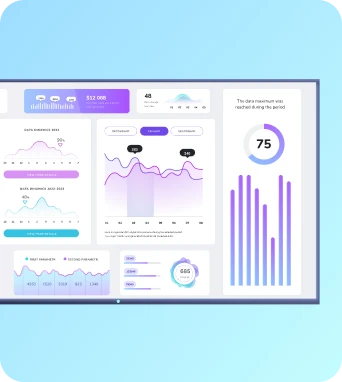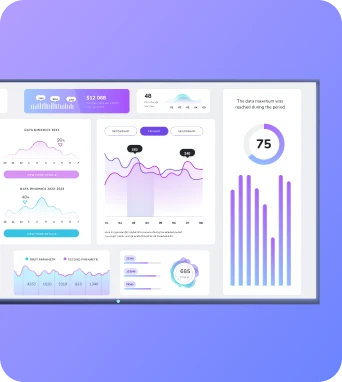Biometric audience tracking
Biometric audience tracking is the automated measurement of viewer characteristics and engagement at public displays using biometric signals such as facial features, gaze direction, and dwell time. In digital signage it estimates anonymised demographics and attention metrics to inform content decisions and measure campaign reach without storing personal identifiers.
Biometric audience tracking
How biometric audience tracking works for signage
Biometric audience tracking systems combine hardware sensors, on‑device or edge compute and analytics software to produce anonymised audience metrics for each screen. Common sensors include RGB cameras and depth sensors; some setups use thermal or motion detectors for presence sensing. The raw input is analysed to detect faces, estimate head pose and gaze, measure dwell time and count unique viewers across sessions. Modern solutions increasingly perform processing at the edge—on the media player attached to the screen or an adjacent appliance—so images need not be transmitted offsite, reducing privacy risk and latency. Analytics models return aggregated attributes such as estimated age bracket, perceived gender expression, and attention score rather than personal identifiers. For digital signage operators, the output is a stream of event records and summaries: view start and end timestamps, estimated attention duration, repeat visit markers and attribute distributions over time. These metrics integrate with content management workflows to trigger targeted playlists, A/B tests or optimised rotations based on the audience composition at specific times and locations. In a retail environment, for example, a window display can switch creative if the majority of passers-by are younger adults; in an office, a lobby display can surface safety messages when attention is high. Fugo.ai users can pair audience insights with scheduling rules to adapt content dynamically, while using aggregated dashboards and exportable reports to measure campaign reach and return on investment without exposing raw images.
Privacy, compliance and operational considerations
Privacy and regulatory compliance are central to responsible biometric audience tracking. Under regimes such as GDPR, biometric identifiers used for uniquely identifying a person are special category data, so many deployments avoid storing identifiable biometric templates and instead use ephemeral, aggregated metrics. Best practice is to process images on device and retain only non‑reversible aggregates like counts, age ranges and attention scores, with strict retention windows and log auditing. Clear signage, privacy notices and, where required by law, consent mechanisms help maintain transparency. Organisations should undertake Data Protection Impact Assessments (DPIAs) before deploying tracking and ensure contractual and technical safeguards with any third‑party analytics provider. Operationally, accuracy depends on camera placement, field of view, lighting and occlusions: overhead or high‑angle mounts reduce facial visibility, while backlit conditions lower detection rates. Calibration during installation, continual quality checks and model updates mitigate drift and bias. Teams must be aware of demographic estimation limits—age and gender estimates are probabilistic and can reflect model bias—so metrics should guide strategy rather than dictate sensitive decisions. Network capacity, on‑device compute and fallback content plans are practical concerns: if the analytics module fails or is offline, signage should revert to default playlists. Finally, combine audience signals with other data sources such as POS, footfall counters or survey feedback to validate insights and avoid overreliance on a single sensor.
Implementation and next steps
If you are considering biometric audience tracking for your Fugo.ai-managed network, start with a small pilot focused on a few representative locations. Define clear objectives—what you want to measure, how the data will change content, and what success looks like—then choose hardware that supports on‑device processing to minimise data exposure. Prepare privacy documentation, perform a DPIA, and inform facilities teams about mounting and lighting needs. Monitor pilot metrics against business KPIs, review model performance and bias, and refine rules for content triggers and retention policies before scaling. For assistance designing a compliant pilot and integrating audience metrics into content schedules and dashboards, Fugo’s team can advise on player selection, edge processing options and analytics configuration. We can also help ensure your rollout aligns with local privacy law and accessibility expectations while delivering measurable improvements to engagement and message recall. Learn more about Biometric audience tracking – schedule a demo at https://calendly.com/fugo/fugo-digital-signage-software-demo or visit https://www.fugo.ai/.
Keep the learning going...
Biometric access displays
Biometric access displays are digital screens paired with biometric sensors (fingerprint, facial, iris or palm recognition) that verify identity at entry points, show access outcomes and compliance messages, and feed status to networked TV dashboards. They help centralise access control information and link with signage platforms like Fugo for automated alerts and rules.
Biometric analytics for signage
Biometric analytics for signage applies sensors and software to capture anonymised physical and behavioural cues—such as gaze direction, estimated age range, gender probability and dwell time—from viewers of digital signage and TV dashboards to measure attention, optimise content relevance and report audience engagement without storing identifiable biometric templates.
Biometric-triggered content
Biometric-triggered content uses biometric inputs such as facial analysis, voice, gait or gesture detection to adapt what displays on digital signage and TV dashboards in real time. It enables personalised messaging, contextual information or access prompts while imposing strict requirements for consent, data protection and secure integration into signage networks.



